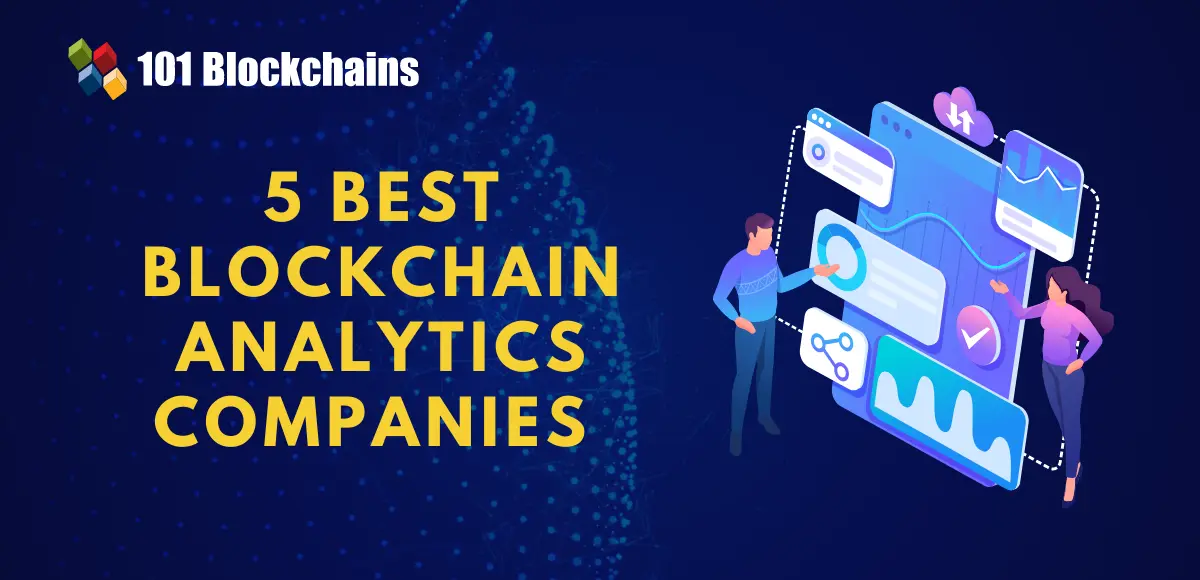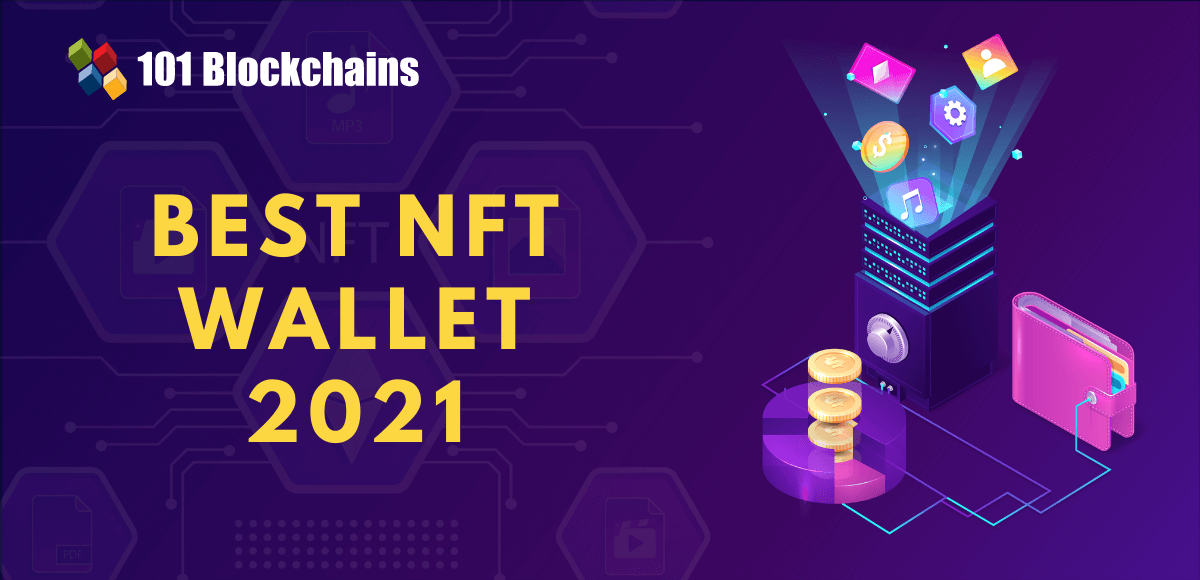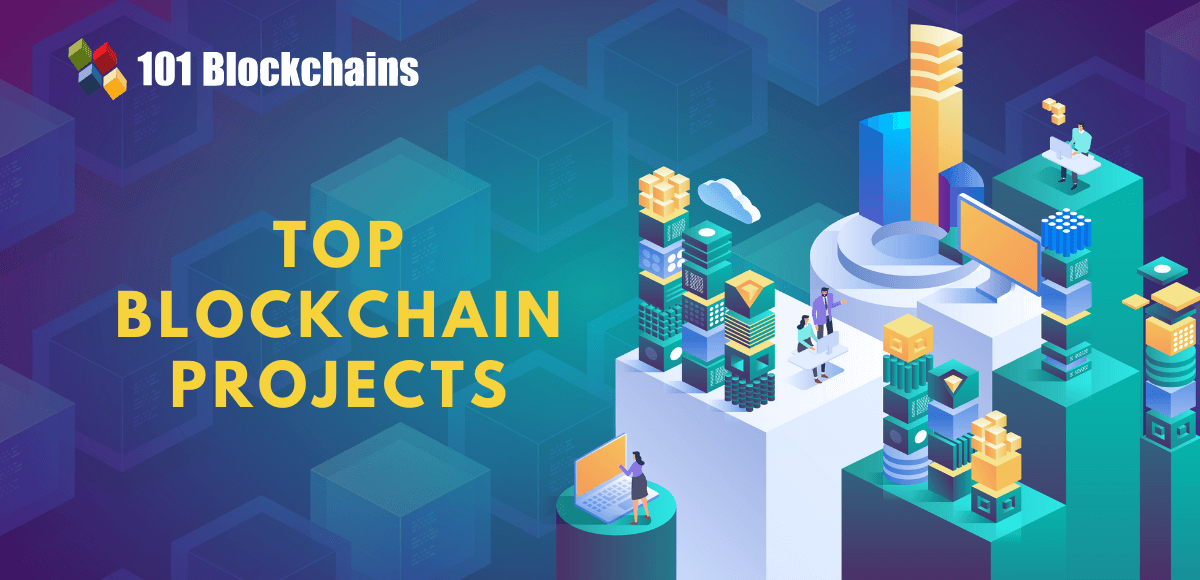Learn how blockchain truly works, master key definitions, and uncover what makes smart contracts so "smart." Dive into the fundamentals, gain valuable insights, and start your blockchain journey today!
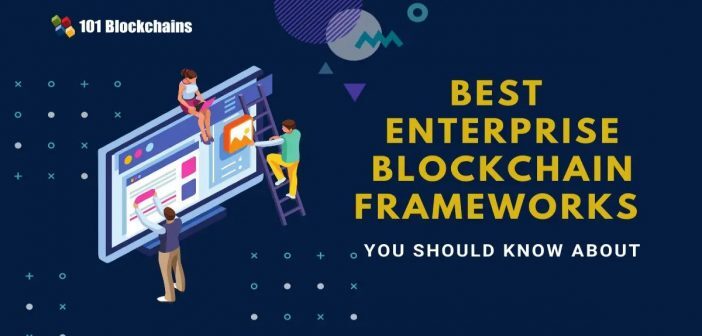
- Reviews
Diego Geroni
- on August 30, 2021
Best Enterprise Blockchain Frameworks You Should Know About
When it comes to the enterprise blockchain framework, there are many great frameworks out there. If you are looking to build your enterprise solution, then you have come to the right place as we will go through the best enterprise blockchain frameworks.
Blockchain has changed how enterprises work. It has improved the network’s transparency, immutability, and efficiency — bringing benefits to the enterprise setups. That’s why more and more enterprise companies are willing to test the technology to learn more about it. There are also many enterprise companies that are already working on the technology successfully.
As a business, your aim is to have a network that can sustain the needs of your enterprise. Not only that, but it also needs to be future-proof and should align with the enterprise business goal. This guide will offer a short blockchain framework list that you can check out.
Build your identity as a certified blockchain expert with 101 Blockchains’ Blockchain Certifications designed to provide enhanced career prospects.
Why Use Enterprise Blockchain Frameworks?
So, you might be thinking about what are the benefits of enterprise blockchain? If you are familiar with blockchain, then you should know that blockchain is all about transparency and decentralization. However, enterprise requires the complete opposite of what a traditional public blockchain has to offer.
For enterprises, permissioning is essential. For them, blockchain needs to ensure that permissioning works through the system, protecting data and intellectual property at all times. Permissioned blockchains are the key there. Not only do they offer proper security levels, but they are also fast compared to a public blockchain.
Public blockchains are not enterprise-friendly. By definition, anyone can join an open network — which not all enterprises would want — until and unless they are creating a public network for a part of their service.
So, what factors really make enterprise blockchain so lucrative? Let’s look at the benefits below:
- An enterprise blockchain can mean less cost. It also improves fast processing and ensures low cost. The use of smart contracts automates a good part of the network transactions, including settlement clearance and so on.
- The elimination of a centralized network also ensures that there is no humanly possible fraud in the network.
- Human-made errors are also removed from the system — saving time, effort, and cost associated with it.
- It offers greater transparency and provides accountability.
- Get access to real-time data
- Enterprise blockchain is great for setting up authorized access across the different security levels of the organization.
- Lastly, it helps redundancy reduction and improves the better quality of data collection and transmission.
Why Do We Need Enterprise Blockchain Frameworks?
Now that we have understood the need for the enterprise blockchain let’s understand why enterprise needs frameworks.
Frameworks offer a structure that enables developers to build apps quickly. It is true for every ecosystem as frameworks take care of the granular functionalities of an ecosystem.
For example, if you are using a Django framework to build the web, then you do not have to worry about basic functionalities, including authentication, database connection, and so on. The frameworks provide modules to carry out the tasks. With frameworks, there is also no need to build something from scratch or, in simpler words, “re-invent the wheel.”
Similarly, an enterprise cannot afford to build a complete end-to-end blockchain solution. The frameworks help to simplify the process and also ensure that the enterprise has the freedom to customize the blockchain network they are building for themselves. Frameworks offer the building blocks which act as an accelerator for enterprises, and they can focus on implementing their requirements rather than re-inventing ideas.
The same can be true for web development. You can find blockchain development frameworks that enable web developers to create websites efficiently. We will share the best blockchain framework list with you later in this guide.
Market Share
Distributed ledger technology is going to change the world around us. The number one reason behind its impact is the benefits it has to offer. Organizations can take full advantage of the trust provided by the blockchain. It fuels trust in any organization — improving processes and execution of even the most complex organizational aspects.
Another big advantage of using blockchain is its low-cost implementation, management, and execution — all of these accounts for its market share, which can reach $3.1 trillion by 2030.
This astounding growth is only possible if the organizations use blockchain to power their business process. According to the paper, artificial intelligence will also play a crucial role in its growth.
What Are the Elements of Blockchain Development Frameworks?
Just implementing blockchain will not give you success. As an organization or an enterprise, you need to ensure that certain elements work as intended. Let’s discuss the elements below to get a better picture.
High Confidentiality
As an enterprise, you have to ensure that you understand the importance of confidentiality. Blockchain is defined as a transparent, decentralized network that offers privacy and trust.
For an enterprise, it is impossible to offer universal access, as there are many important data or information that needs to stay private for the organization’s success. Also, if the info gets leaked, the organization can incur huge losses. That’s why confidentiality and security are the two elements that need to be at the top priority for an enterprise where lost information can cost millions of dollars lost in revenue.
To get started, organizations need to establish proper access cont
rol throughout the data stored on the platform. Not only that, but they should also adhere to legal and regulatory requirements.
Enterprise blockchain frameworks always have the feature to provide the necessary security. Hyperledger Fabric, for example, utilizes a three-level data flow structure to ensure that the enterprise data remains secure at any cost.
The three-level data flow structure looks like below:
- Providing authorized access to users by grouping information on separate ledgers or channels.
- The transactions between the parties are kept confidential with the help of better privacy and data confidentiality. This way, no third party can access transactional information.
- Lastly, offering zero-knowledge validation ensure that the encapsulated data can be verified without data reveal.
Excited to learn the basic and advanced concepts of Hyperledger Fabric? Enroll Now in Getting Started with Hyperledger Fabric Course
Full Transparency
Transparency is necessary if an enterprise organization wants to grow. They need to ensure the proper flow of information among the parties. The supply chain requires the most transparency as the right information can allow it to work optimally. Any lack of information means service interruption — resulting in a loss.
In general, enterprises always fear that information sharing can backfire if their competitors get to know about it. Furthermore, internal pricing is an important part of any organization — leaking this information can lead to market disadvantage as the competitors can learn about their pricing and create strategies to improve market share.
Any enterprise blockchain framework should understand the subtle difference between critical information and normal information to overcome this. By doing so, the transparency in any entity can be maintained without the need to expose the core critical information.
When it comes to the public blockchain, transparency means a completely different thing. Not even the public blockchain is completely transparent — only the required information is easily accessible — whereas the more critical information is safely stored in the network.
In terms of transparency, enterprise blockchain frameworks do a better job by ensuring different levels of privacy. Therefore, the best approach is to have a higher level of privacy where the information required to run the network optimally is shared among peers. On the other hand, the confidential information needs to be stored safely — keeping the organization’s interest intact.
Low Operational Cost
A properly transparent network can bring better operational cost reduction. It can do it in the form of reduced manual intervention, audit trial, and cost-sharing.
- Middlemen Elimination: Any network that manages to share information without exposing more critical information also means that the elimination of intermediaries. By doing so, the cost required to hire or manage them is completely removed. In some cases, the number of mediators can be reduced to a bare minimum. Smart contracts are mostly used to automate transactions and data sharing.
- Cost Sharing: Another operational cost reduction comes from the use of distributed ledger technologies. Big organizations require data to share as a part of their workflow. By using a distributed ledger technology, the big organizations can share the cost needed to host and maintain the data themselves. This also means that there is no need for any third-party solution or software — which means additional cost and more security issues.
- Audit Trail: An appropriately transparent system also means easy audit-trial, reducing the cost and time associated with it.
Low Transaction Cost
The last point that we are going to discuss is the transaction cost reduction. DLT enables enterprises to remove third party elements or at least decrease their involvement to a bare minimum. This results in transaction cost reduction.
Want to learn more about Blockchain Technology? Check out our blockchain definition guide to learn more about it.
How to Choose the Best Blockchain Technology Framework?
Awesome, we covered quite a bit about the enterprise bloc
kchain framework. Now, it is time to go through the steps that you should take to choose the right enterprise blockchain framework.
The list will help you shortlist a number of enterprise blockchain frameworks. From there, you need to make a decision based on your requirements. Therefore, choosing an enterprise blockchain framework can be tricky — and that’s why it is important to look for different elements before making a choice.
- Community: A thriving community can help you cope with issues and growth. As an enterprise, you should always ask how large and impactful the framework community is?
- License: As an enterprise, you need to double-check the framework license. Ask yourself questions such as it is free to use? If yes, does it have some limitations? These questions will equip you to make the right decisions. Using a framework with limited usage or wrong licensing term can easily hamper the long-term growth of your organization.
- Support model: Frameworks require constant support. If it receives support from a large corporation, you may want to give it a try as it means it has a better survival rate in the long term.
- Roadmap: Does the framework you are choosing have a clearly defined roadmap? If it does, then check out what they have to offer in the future.
- Activity: How active is the framework when it comes to updates and patches?
- Ease of use: Last but not least, you should also try to understand the ease-of-use the framework has to offer.
Start your blockchain journey Now with the Enterprise Blockchains Fundamentals
Best Enterprise Blockchain Technology Frameworks
With all the basics covered, it is now time to list the big enterprise blockchain frameworks out there. Let’s go through them to learn about them.
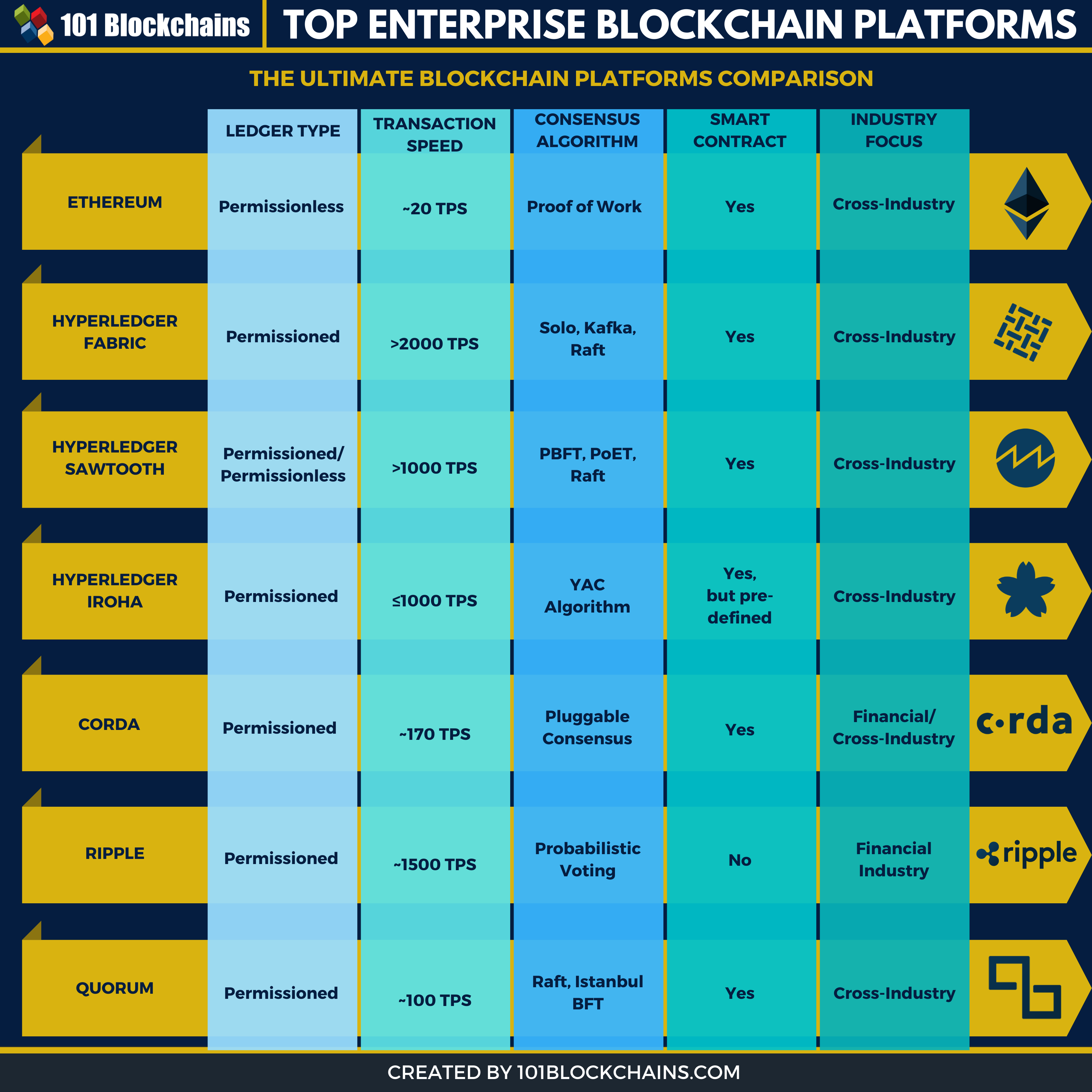
Hyperledger Fabric
Fabric blockchain is one of the most popular enterprise open-source blockchain frameworks out there from Hyperledger. Hyperledger framework first came into existence in 2016. It is a permissioned network, which makes it an ideal choice for enterprises out there.
In reality, it is an open-source enterprise blockchain and offers all the key features that you would expect from an enterprise blockchain — including smart contracts, protocols, privacy, security, and so on!
There are many benefits of using Fabric –
- Open source and free to use
- Quality code
- Modular design, great for integration and expansion
- Higher efficiency
- Permissioned network
- Can be used in a wide range of industry
Out of all the features, the modular design is what makes Hyperledger framework appealing. It also offers proper confidentiality, transaction encryption — which public blockchain does not offer for enterprise needs.
More so, the modular design also brings in fewer verification levels and improves software and network performance. Lastly, you can use Fabric project from Hyperledger blockchain and configure it in such a way that it protects enterprise data by keeping it in check with regulations and various laws.
Want to know more about Hyperledger Fabric? Read more from our guide on Hyperledger Fabric now.
Quorum
Quorum is another popular enterprise open-source blockchain framework based on the Ethereum network. It got first released in 2016. More so, the framework is mainly focused on the finance sector and is the brainchild of JP Morgan.
Like the other enterprise blockchain framework, Quorum also offers permissioned networks and allows organizations to customize it according to their requirements.
The key features of Quorum include the following –
- Peer and network management
- Open source blockchain framework
- Community-driven
- Trustworthy and enterprise-ready
- Mature
- Enterprise-ready
- Community-driven
The three major components of the Quorum architecture include the following-
- Quorum node: A Geth-powered command-line tool
- Constellation transaction manager: A transaction manager that focuses on transaction data care.
- Enclave: Enclave handles sensitive information and manages encryption/decryption
Quorum has been actively developed, and there has already been successful implementation beyond financial institutions. The key selling point here is faster processing transactions, easy integration, and permissioned network.
Excited to learn the basic and advanced concepts of ethereum technology? Enroll Now in The Complete Ethereum Technology Course
Enterprise Ethereum (EE)
Ethereum network is popular due to its ability to create dApps and smart contracts. However, it is an open network, public in nature.
Enterprise Ethereum is a permissioned or private take on the Ethereum codebase. It enables enterprises to utilize Ethereum without worrying about confidentiality, security, transparency, and cost.
The EE offers all the features that Ethereum has to offer. The only difference is the inclusion of identity management for making it a permissioned network. EE is an excellent product as it aims to utilize existing standards and wants to evolve side by side. It is currently a member-driven organization (Enterprise Ethereum Alliance) with over 300+ company members, 45+ countries, 1400+ individual members, and 19+ technical and legal advisory.
Want to know more about Enterprise Ethereum? Read more from our guide on Enterprise Ethereum now.
R3 Corda
R3 Corda is another one of the enterprise blockchain platforms that you should check out. In reality, it offers a permissioned environment and does not offer any permissionless framework at the moment. Even though it was previously more suited for financial organizations, now it’s applicable in many industries.
The Corda architectural standards include the following:
- Longevity
- Stable
- Secure
- Interoperable
- Scalable
R3 Corda also has its own business principles laid out that helps the enterprise understand what it has to offer.
- Users can discover each other
- Offers assured identity
- Support shared logic
- Privacy oriented
- Immutable
- Authoritative
Overall, R3 Corda has to offer everything that an enterprise blockchain has to offer.
Want to learn the basic and advanced concepts of R3 Corda Development? Enroll Now: Beginner’s Guide to Corda Development
Blockchain Frameworks Comparison
Below you will see a full comparison of the four different blockchain frameworks. You can use this table to compare the frameworks and make your final decision.
Hyperledger Fabric Quorum R3 Corda Ethereum
Ledger Type Permissioned Permissioned Permissioned Permissionless
Governance Linux Foundation JP Morgan and Ethereum developers R3 Consortium Ethereum developers
Industry-focus Cross-Industry Cross-Industry Financial Industry Cross-Industry
Cryptocurrency None None None Ether (ETH)
Consensus Mechanism Pluggable Mechanism Voting Protocol Pluggable Mechanism Proof of Work (PoW)
Smart Contract ✓ ✓ ✓ ✓
Smart Contract Language NodeJS or Golang or Java Solidity Java or Kotlin Solidity
Application Type Wide-ranging Wide-ranging Financial applications Wide-ranging
Throughput > 2000 tps 100 tps ~170 tps ~ 20 tps
Conclusion
This leads us to the end of our enterprise blockchain frameworks article. Here we discussed what constitutes enterprise blockchain, the needs, market share, elements, and the enterprise blockchain frameworks popular out there. Hopefully, this guide will help all the novices out there to learn more about the enterprise blockchain framework.
However, the topic of blockchain technology is quite complex and difficult to understand most of the time. If you are interested in learning from an expert, we recommend checking out our blockchain course. Why wait? Start your blockchain journey right now!




